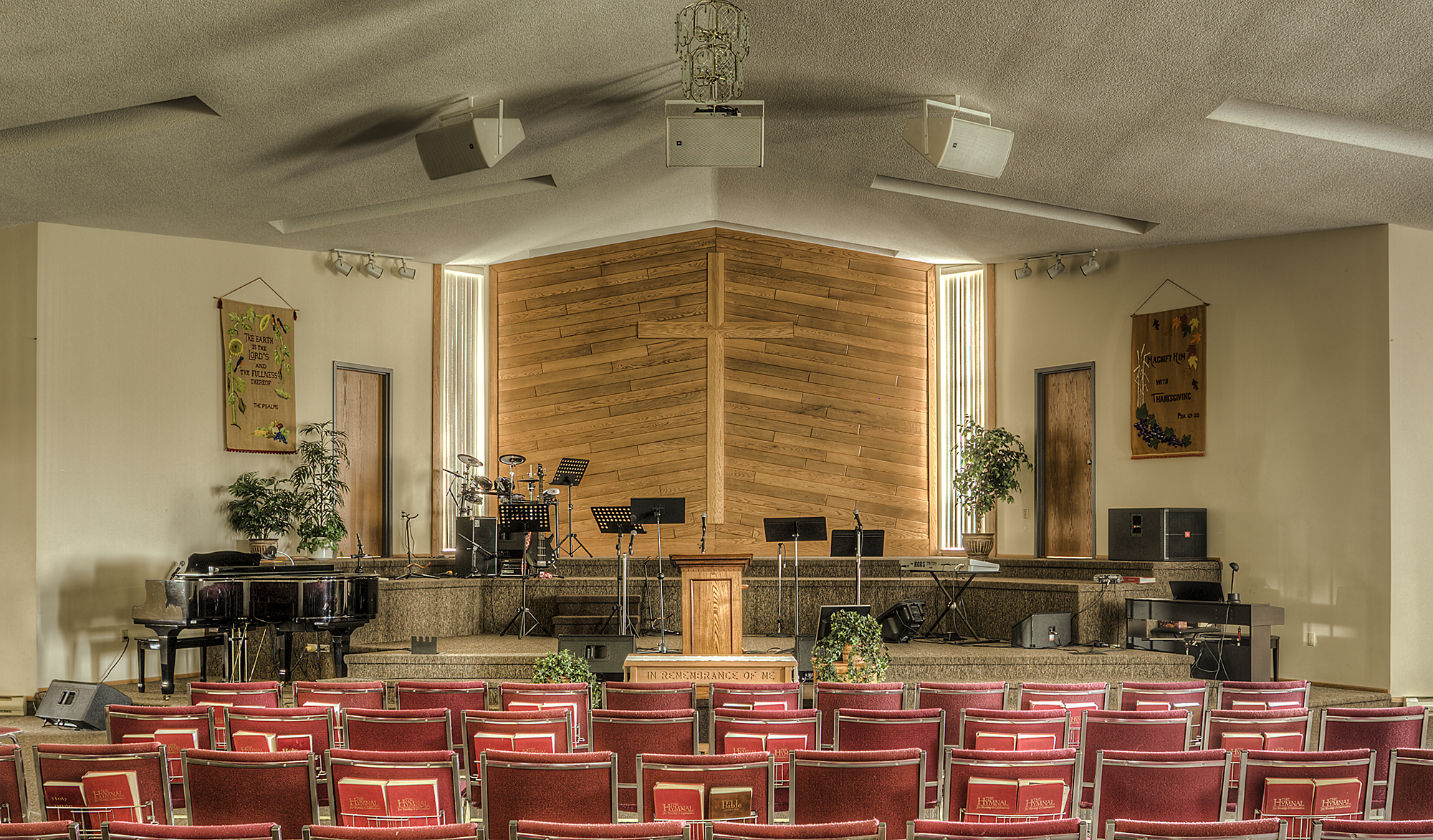What costs more? Or, what will give you the most bang for the buck? Did you know that for less than the cost of a fully enclosed drum booth, you can fix all of the acoustical issues of a typical sanctuary and not need a drum booth?
Here is a typical drum booth churches are buying. This booth retails for $4,300.00 and is often on sale for $3,000.00 plus shipping.
Here are all of the sound problems the drum booth solved. Keeps the drums out of the mix, and the people in the front of the church have less noise from the drum kit. The downside to all of this is that often, the drummer plays louder, which leads to many getting tennis elbow. Plus, hearing damage often occurs. There is one extra cost to include. Often drummers need headsets or floor monitors to hear everyone else on stage. What is often overlooked is that churches should have the drummer sign a liability waiver that the drummer will not sue the church for premature hearing loss and permanent damage to their arms due to tennis elbow. Drummers often have to play louder in order to hear themselves inside a drum booth or shield.

Here is an example of a modest church that decided to fix the worship space instead of getting a drum shield or booth. The material costs, including the paint, were $1,000.00. Three people over 3 Saturdays completed the installation. If you look carefully at the photo below, six months later, there is no drum booth around the drummer. They don’t need one anymore.

The following is a list of the planned sound issues solved:
- No more standing waves
- No more deadspots or hotspots
- Eliminate flutter echoes often heard off the back walls on stage.
- No more excessive bass
Bonus fixes included and no extra cost:
- Better speech intelligibility
- Increases the signal-to-noise ratio to 21dB throughout the room
- Most of the floor monitor spill was gone
- Less sound system distortion
- No more bass distortion
- Equalized the room to remove excess energy at 400 Hertz -20dB
- Went from 18 inches to 38 inches of before feedback,
- The room is +/- 1.5dB throughout the room
- Makes the room easier for the musicians to perform
- Improved sound for people with hearing aids
- Before, about 15% of the congregation was singing, now it’s around 60% after 4 months
- The sound team is having an easier time mixing.
- No drum shield of any kind
- Drummers are playing quieter without being asked to.
- The drummer can hear everyone on stage with minimum floor monitor support
- The pastor is less fatigued after preaching
- No more sound complaints if the sound is too loud
- The sound system sounds so much better
- The bass from the sound system is much more dynamic
- The bass from the bass guitar is cleaner and not overpowering any of the other instruments
These are all of the comments various church members, musicians, and the sound team shared after the first 4 months of the acoustical changes. All they were hoping for was less bass drowning out everyone on stage, eliminating hotspots and deadspots in the audience area and on stage, and stopping the loud reflections off the back wall affecting the musicians and the pastor when preaching. The diffusers gave them 23 improvements instead of just three of them. No other custom or “off the shelf” acoustical system can do all of that in one step unless you have unlimited cash at 30 times the cost.
Drum Shield or Fixing a worship space. For the cost of a drum booth, you can fix up a church seating to 800 with some sweat equity and not need a drum booth and all the supporting technology.



